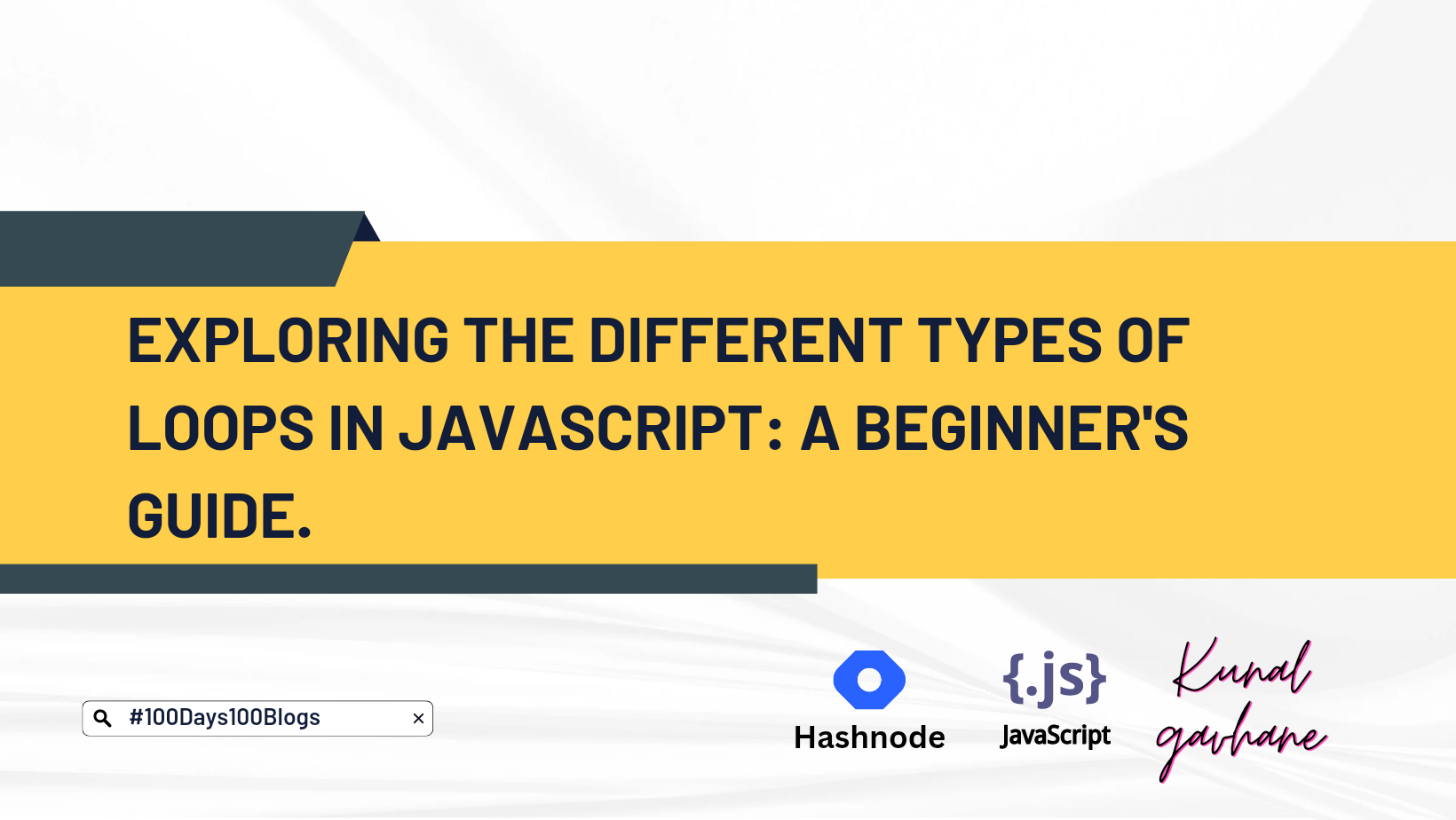Exploring the Different Types of Loops in JavaScript: A Beginner's Guide
 kunal gavhane
kunal gavhane
Loops in JavaScript are an essential part of the language, enabling developers to execute a block of code repeatedly. This ability is particularly useful when you need to perform a specific task multiple times or iterate through a set of data. There are different types of loops in JavaScript, each with its own syntax and use case.
In this blog post, we'll cover the three main types of loops in JavaScript: for loops, while loops, and do-while loops. We'll also provide examples to help you understand how each loop works and when to use it.
1) For Loops
A for loop is the most commonly used loop in JavaScript. It consists of three parts: the initialization, condition, and increment/decrement.
The syntax of a for loop is as follow :
for (initialization; condition; increment/decrement) {
// block of code to be executed
}
Let's break down each part of the for loop:
Initialization: This is where you set the starting point of the loop, usually by declaring a variable and assigning it a value.
Condition: This is the expression that determines whether the loop will continue executing or not. If the condition evaluates to true, the loop will continue to execute. If it evaluates to false, the loop will end.
Increment/Decrement: This is where you modify the variable value that you declared in the initialization step. The modification is usually done using an increment or decrement operator (i.e., ++ or --).
Here's an example of a for loop that counts from 0 to 4:
for (let i = 0; i < 5; i++) {
console.log(i);
}
The output of this loop will be:
0
1
2
3
4
2) While Loops
A while loop is another type of loop in JavaScript that allows you to execute a block of code repeatedly as long as a certain condition is true.
The syntax of a while loop is as follows:
while (condition) {
// block of code to be executed
}
In a while loop, the condition is checked before each iteration. If the condition is true, the loop will continue to execute. If it's false, the loop will end.
Here's an example of a while loop that counts from 0 to 4:
let i = 0;
while (i < 5) {
console.log(i);
i++;
}
The output of this loop will be:
0
1
2
3
4
3) Do-While Loops
A do-while loop is similar to a while loop, but with one crucial difference: the block of code is executed at least once, regardless of whether the condition is true or false.
The syntax of a do-while loop is as follows:
do {
// block of code to be executed
} while (condition);
In a do-while loop, the condition is checked after each iteration. If the condition is true, the loop will continue to execute. If it's false, the loop will end.
Here's an example of a do-while loop that counts from 0 to 4:
let i = 0;
do {
console.log(i);
i++;
} while (i < 5);
The output of this loop will be:
0
1
2
3
4
In conclusion, loops are a fundamental concept in JavaScript that every developer should master. Whether you need to iterate through a set of data, perform a task multiple times, or create a game loop, JavaScript provides a range of loop types.
Subscribe to my newsletter
Read articles from kunal gavhane directly inside your inbox. Subscribe to the newsletter, and don't miss out.
Written by

kunal gavhane
kunal gavhane
Where people see a problem, we see an opportunity and a new project! Hello, I am an Engineer;